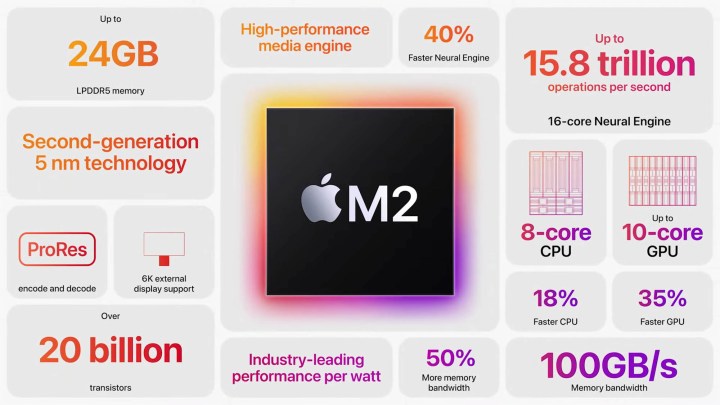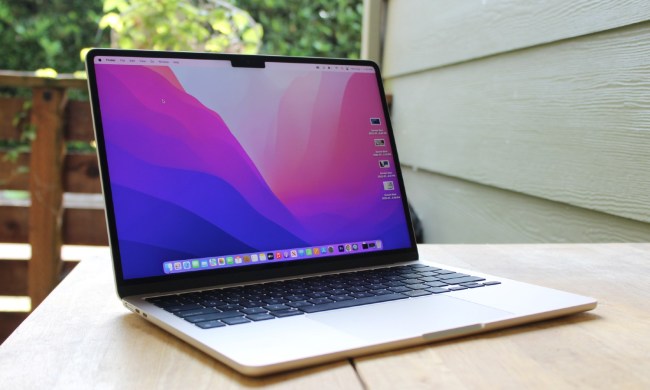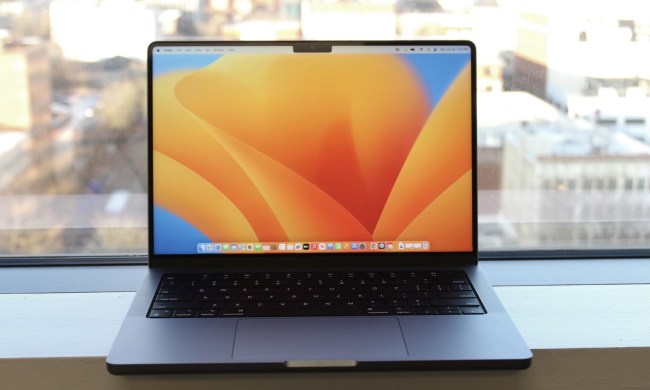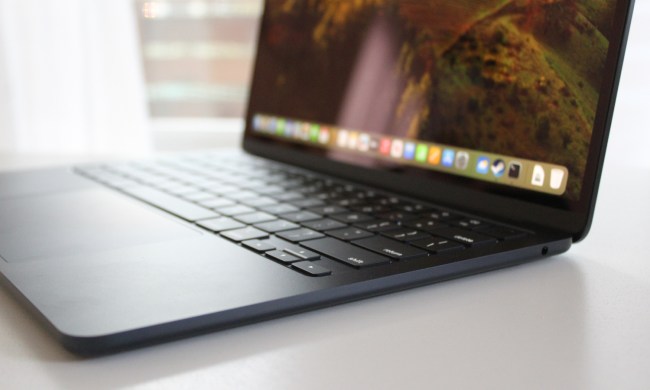Apple announced the new M2 processor at WWDC 2022, ushering in the next generation of Apple silicon. The new chip comes with eight cores, just like the M1, but they’re created using Apple’s next-gen architecture. This allows it to achieve up to 18% higher performance over the M1 while using the same amount of power, and it’s coming to a new MacBook Air and MacBook Pro.
Despite bringing more performance, the M2 is largely the same as the M1 under the hood. As we expected going into the show, this is a refinement to the 5nm manufacturing process that the M1 is built on. The “real” Apple M2 won’t be here until 2023, at the earliest, which is when Apple’s supplier will make next-gen manufacturing processes available.

Instead, Apple focused on what it could improve. The chip features a 25% bump over the M1 in transistor count, packing in more performance in the same package size. It also comes with two additional graphics cores, bringing the total count to 10, as well as up to 24GB of unified memory on the chip.
That comes out as 18% higher performance against the M1 while using the same amount of power. For graphics, the M2 can perform 25% faster at the same power, and a massive 35% faster when the power is maxed out. Apple wasn’t content just comparing the new chip to its own products, either. The company also boasted 87% higher performance than a 12-core laptop processor while using only one-fourth of the power.

Apple says the new processor will power the next generation of the most popular Macs. That starts with the MacBook Air M2 and the 13-inch MacBook Pro, both of which Apple unveiled during its developer-focused keynote. Even with these products, though, Apple says it will continue selling the MacBook Air M1 at a slightly lower price than the M2 version.
It will stay in the lineup at $899, while the MacBook Air M2 will run $1,199. The 13-inch MacBook Air is slightly more expensive at $1,299. Apple says educational versions for all machines will be available for $100 less, and the two new M2 machines will be available next month.
The M2 processor will likely make its way into a new Mac Mini and perhaps a new iMac.




